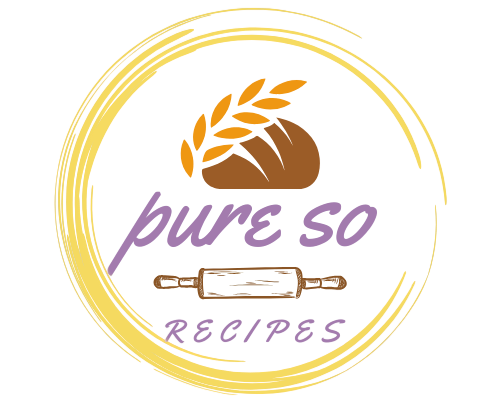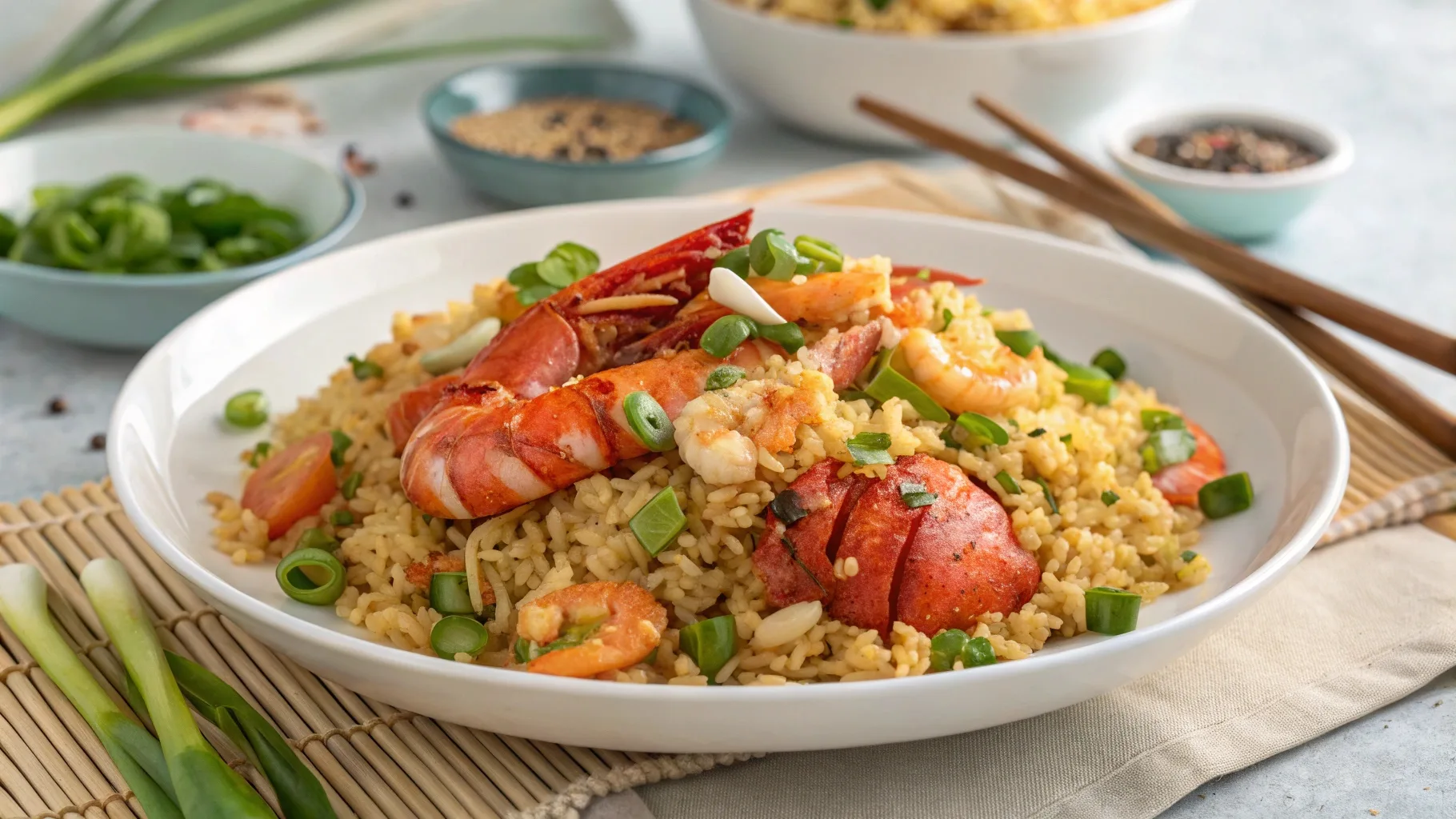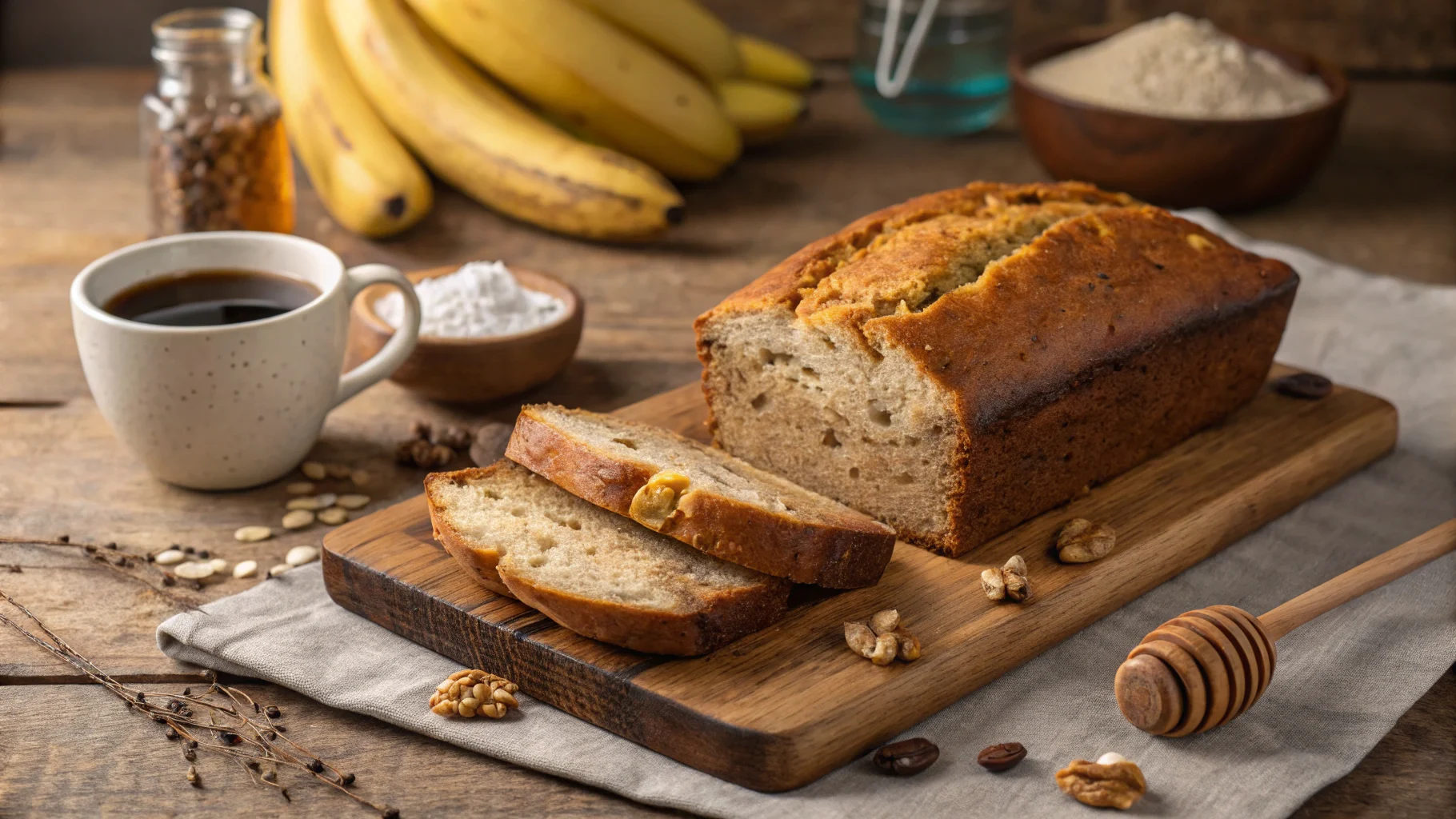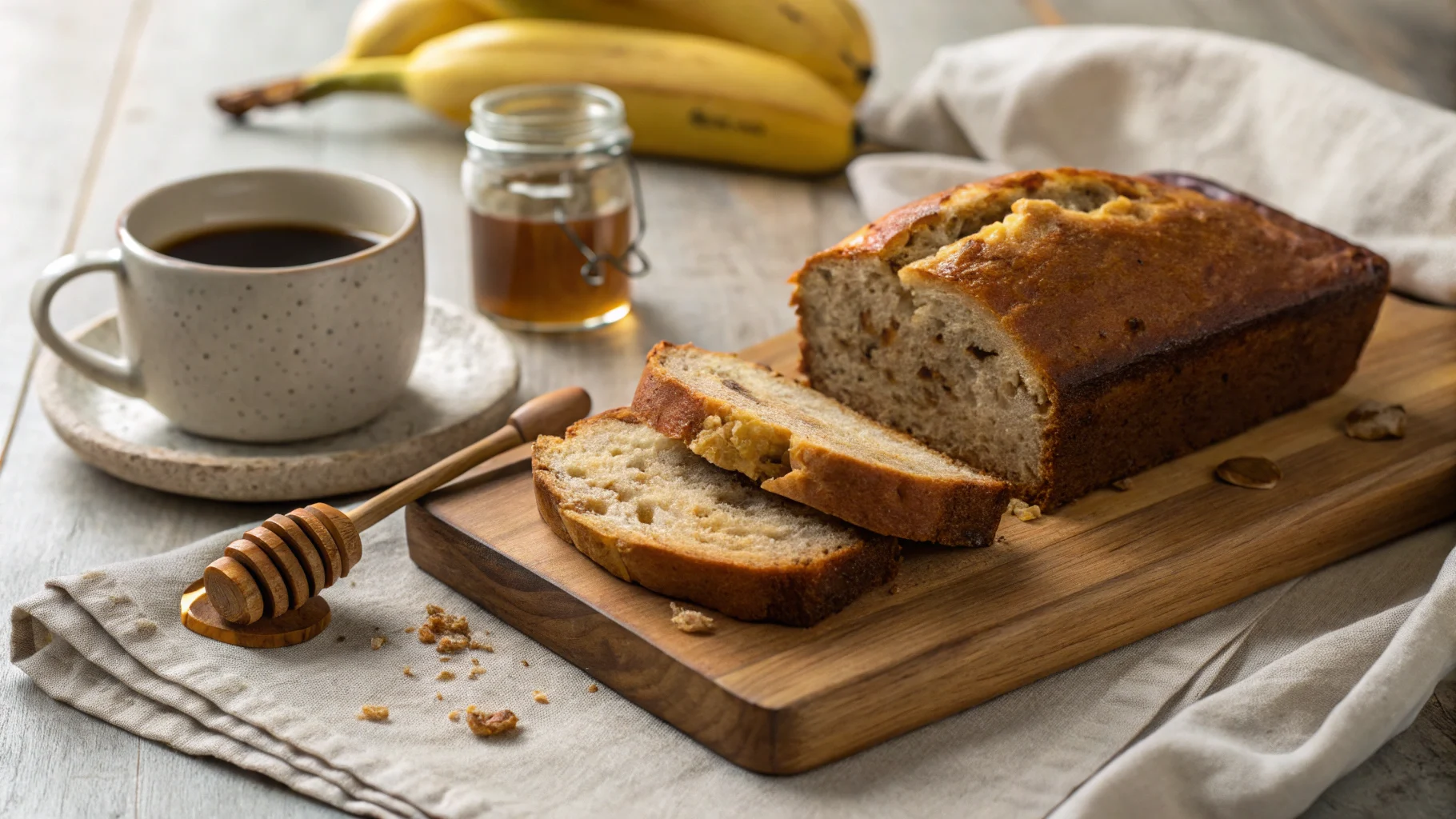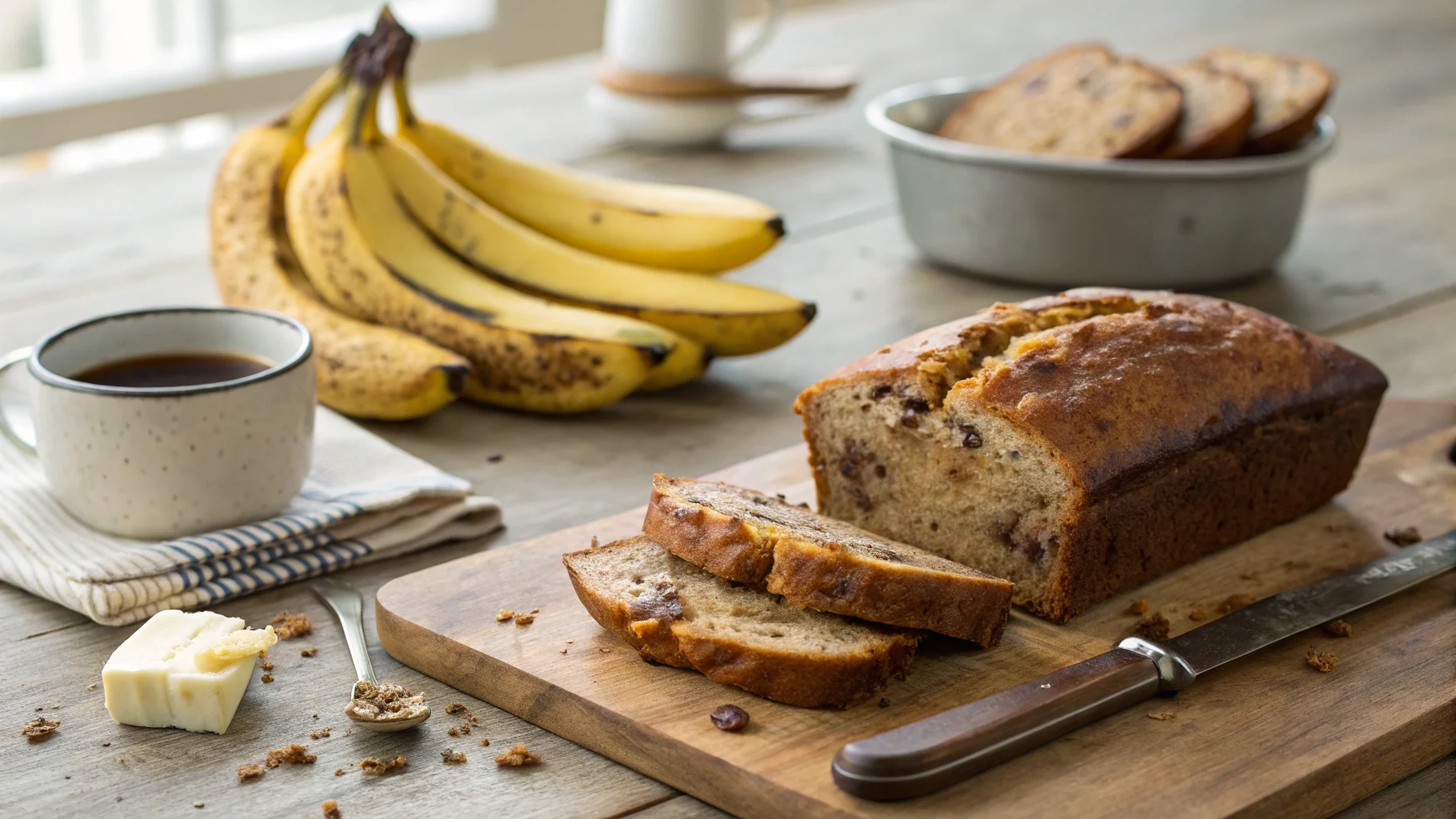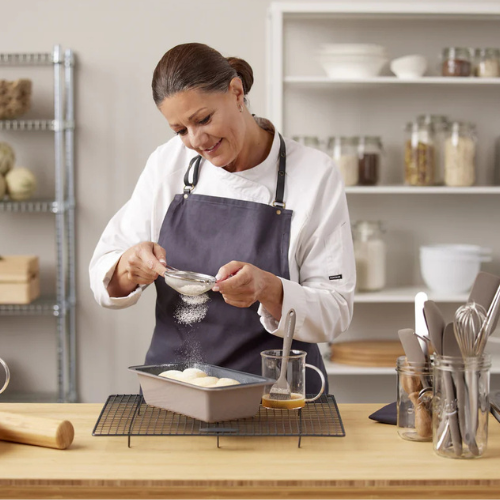Introduction to Lobster Fried Rice
Origins and Cultural Significance
Fried rice has been a staple in many Asian cuisines for centuries. Originally created as a way to repurpose leftover rice and ingredients, it has evolved into a versatile dish enjoyed globally. Lobster fried rice, however, takes this humble dish to a new level of sophistication.
The addition of lobster to fried rice became popular in high-end restaurants as chefs sought to blend comfort food with luxury. In Chinese cuisine, fried rice symbolizes prosperity, and adding premium ingredients like lobster enhances its symbolic value. Similarly, Thai cuisine incorporates lobster fried rice with bold flavors such as lime and chili, reflecting its rich culinary heritage.
By combining the simplicity of fried rice with the decadence of lobster, this dish has become a favorite for special occasions and everyday indulgence alike.
Why Lobster Elevates Fried Rice
Lobster adds a unique flavor to fried rice that is both delicate and robust. Its natural sweetness balances perfectly with the savory notes of fried rice. Furthermore, the tender texture of lobster meat provides a satisfying contrast to the soft rice grains.
When paired with aromatics like garlic and ginger, lobster enhances the umami flavor profile of the dish. Moreover, the seafood element makes the dish feel indulgent while remaining versatile. Whether you’re cooking for a family dinner or hosting a sophisticated gathering, lobster fried rice offers a perfect blend of elegance and comfort.
The richness of lobster also pairs seamlessly with the slightly nutty aroma of sesame oil and soy sauce, which are staples in many fried rice recipes. This harmony of flavors is what sets lobster fried rice apart from traditional versions.
Popular Variations Across Cultures
Lobster fried rice is a dish that transcends borders. In Thai cuisine, it often incorporates spicy and tangy flavors like chili and lime. Thai lobster fried rice might also include fish sauce, adding depth and umami.
In contrast, Chinese lobster fried rice emphasizes simplicity and balance. It frequently features ginger, scallions, and soy sauce, allowing the lobster’s flavor to shine. Some versions might even include egg or shrimp for added richness.
Western takes on lobster fried rice often lean toward fusion, incorporating elements like butter or cream-based sauces. Each version offers a unique twist, but they all highlight the luxurious appeal of lobster paired with fried rice.
Ingredients and Preparation
Selecting the Right Lobster
Choosing fresh lobster is essential for achieving the best flavor in lobster fried rice. Look for live lobsters if possible, as they ensure the highest quality. If live lobsters aren’t an option, frozen lobster tails are a great alternative.
When selecting lobster, consider the size. Smaller lobsters tend to be sweeter, while larger ones provide more meat. Whole lobsters are ideal for extracting both meat and flavor-rich broth, while lobster tails are more convenient for quick recipes.
Additionally, if you’re using frozen lobster, make sure to thaw it properly by placing it in the refrigerator overnight. This method preserves its texture and flavor.
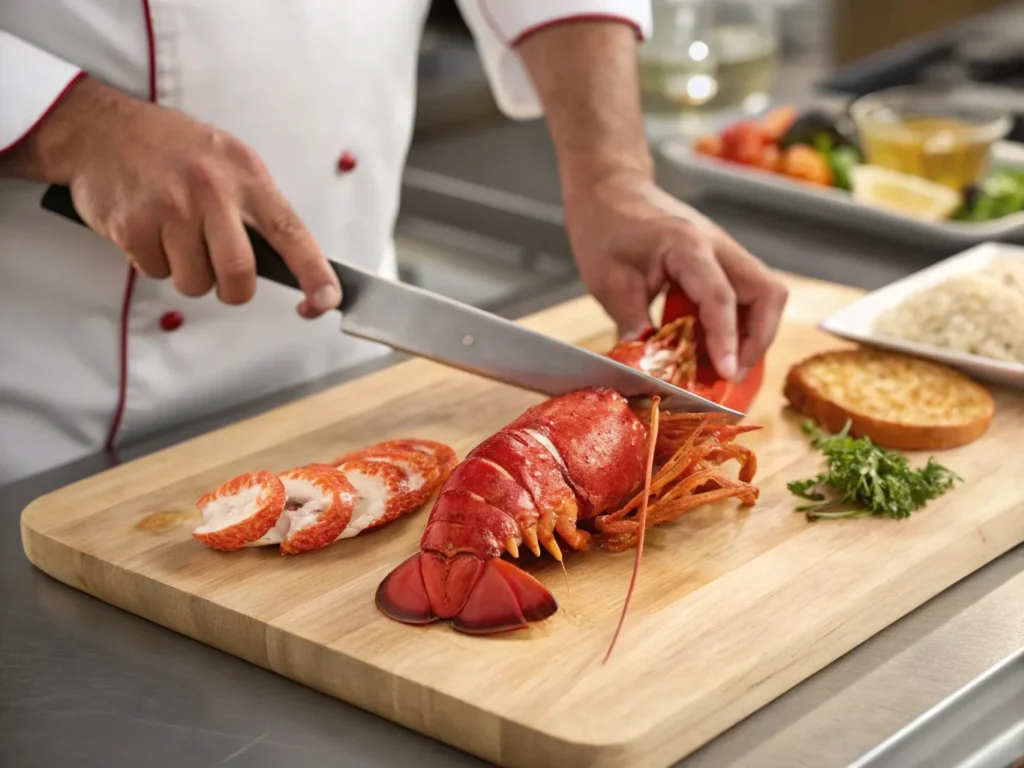
Choosing the Ideal Rice
The key to making perfect fried rice lies in the type and preparation of the rice. Day-old rice is often the best choice because it is slightly dried out, which prevents it from becoming mushy during cooking. If freshly cooked rice is all you have, ensure it cools and spreads out to release excess moisture before use.
Long-grain varieties like jasmine rice work exceptionally well due to their non-sticky texture, allowing the grains to separate easily during cooking. Basmati rice is another great option, offering a subtle aromatic twist to the dish.
For those who prefer a creamier texture, short-grain rice can be used, though it is less traditional. Regardless of the type of rice, proper preparation is essential for achieving the best texture and flavor in your recipe.
Essential Vegetables and Aromatics
Vegetables and aromatics play a critical role in enhancing the flavors of lobster fried rice. Common choices include:
- Peas and Carrots: Add sweetness and a pop of color.
- Scallions: Provide a mild onion flavor.
- Garlic and Ginger: Essential aromatics that amplify umami.
These ingredients not only add texture and flavor but also make the dish visually appealing. Additionally, you can experiment with vegetables like bell peppers or bok choy for a unique twist.
Aromatics like ginger and garlic should always be added first when stir-frying. Their oils infuse the dish with rich, savory notes that complement the lobster’s natural sweetness.
Sauces and Seasonings
The right sauces and seasonings are what transform simple fried rice into an unforgettable dish. Essential ingredients include:
- Soy Sauce: The foundation for savory flavor.
- Sesame Oil: Adds a nutty aroma.
- Fish Sauce or Oyster Sauce: Optional but adds depth and complexity.
- White Pepper: Provides subtle heat.
Balance is key when seasoning lobster fried rice. Start with small amounts and adjust based on taste. Additionally, a splash of lime juice or rice vinegar can brighten the dish and cut through its richness.
By combining these elements, you’ll create a harmonious flavor profile that perfectly complements the luxurious taste of lobster.
Step-by-Step Cooking Instructions
Preparing the Lobster
To make the perfect lobster fried rice, preparing the lobster correctly is crucial. Start by choosing a method that best suits your preference—boiling, steaming, or grilling.
- Boiling: Bring a large pot of salted water to a rolling boil. Add the lobster and cook for 8–12 minutes, depending on its size. The shell should turn bright red when done.
- Steaming: Place the lobster in a steamer basket over boiling water. Steam for 10–15 minutes, ensuring the meat remains tender and moist.
- Grilling: Split the lobster in half lengthwise, brush it with melted butter, and grill over medium heat for 8–10 minutes. This method adds a smoky, charred flavor.
Once cooked, allow the lobster to cool slightly before extracting the meat. Use kitchen shears to cut through the shell and remove the tail, claw, and knuckle meat. Chop the meat into bite-sized pieces, ensuring it’s ready to mix into your fried rice.
Cooking the Ric for Lobster Fried Rice Perfection
The quality of the rice is vital when making lobster fried rice. Always use day-old rice, as it has a firmer texture and won’t clump during stir-frying.
To prepare day-old rice:
- Cook the rice a day in advance using a rice cooker or stovetop. Use long-grain varieties like jasmine or basmati for the best results.
- Spread the freshly cooked rice on a tray or plate to cool. Refrigerate it uncovered overnight to dry out the grains.
If you don’t have day-old rice, cook fresh rice and spread it thinly on a baking sheet to cool quickly. While fresh rice can work in a pinch, the drier texture of day-old rice ensures a better outcome for fried rice dishes.
Essential Stir-Frying Tips for Lobster Fried Rice
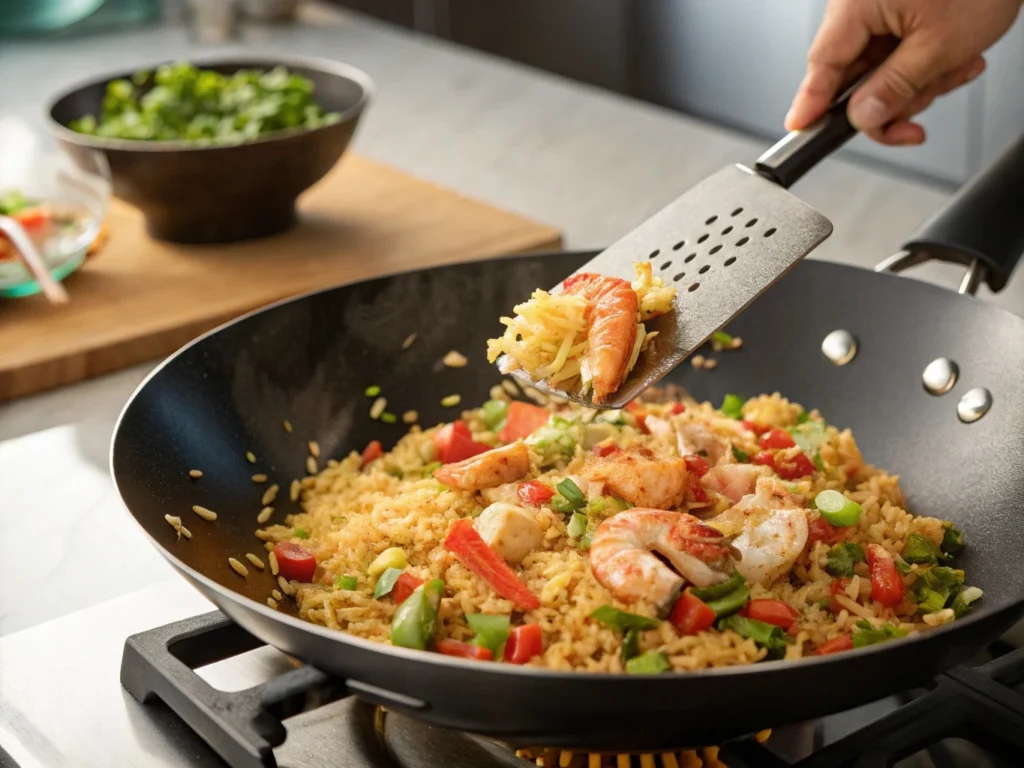
Mastering stir-frying techniques is essential for creating the ideal lobster fried rice. Begin by heating a wok or large skillet over high heat. Add a small amount of oil with a high smoke point, such as vegetable or peanut oil.
- Step 1: Sauté the aromatics, such as garlic, ginger, and scallions, to infuse the oil with flavor.
- Step 2: Push the aromatics to the side and add the lobster meat. Stir-fry for 1–2 minutes until lightly browned.
- Step 3: Add the day-old rice and break up any clumps with your spatula. Stir-fry for 3–4 minutes, ensuring the rice heats evenly.
Proper timing is key during stir-frying. Keep the ingredients moving to prevent sticking or burning, and adjust the heat as necessary to maintain a high temperature.
Combining Ingredients for Optimal Flavor
To achieve a balanced and flavorful lobster fried rice, the order of adding ingredients is critical. Begin by seasoning the rice with soy sauce, sesame oil, and white pepper. Toss the rice thoroughly to ensure the seasonings are evenly distributed.
Next, incorporate vegetables such as peas and carrots. Cook them for 1–2 minutes to retain their texture and color. Return the lobster meat to the wok, mixing it into the rice along with any remaining aromatics.
For an extra layer of flavor, finish with a splash of lime juice or a drizzle of oyster sauce. This final step enhances the dish’s umami profile while balancing its richness. Garnish with fresh cilantro or sliced scallions for a vibrant finish.
Serving Suggestions and Pairings
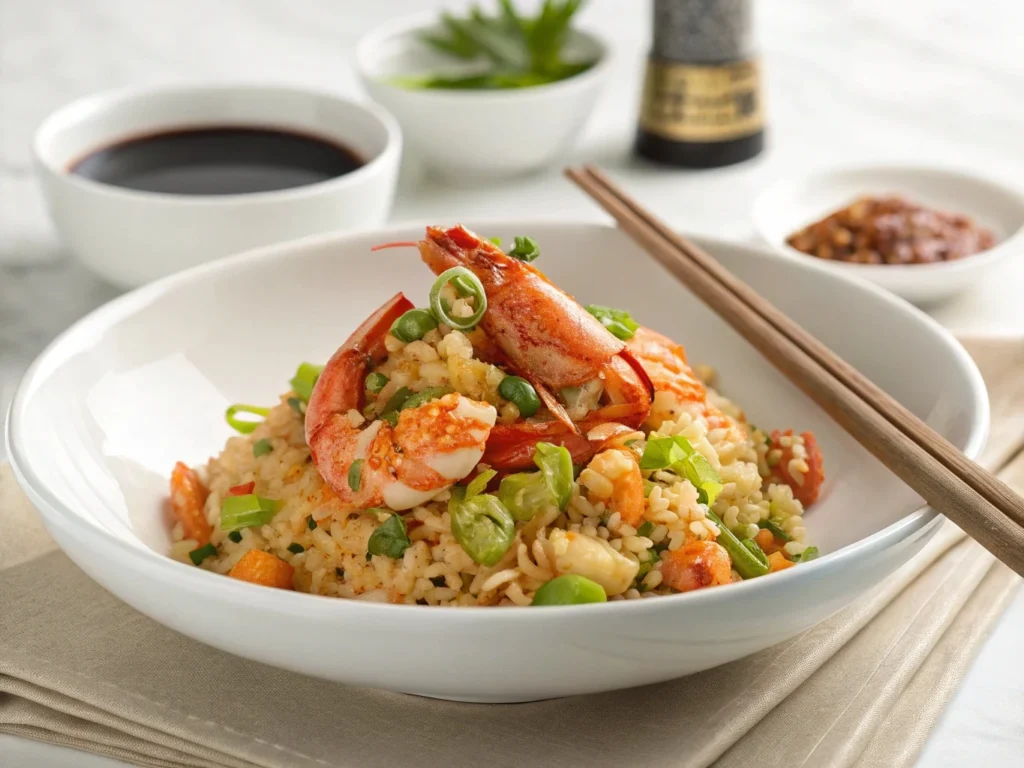
Presentation Tips for Lobster Fried Rice
The way you present lobster fried rice can elevate it from a simple meal to a show-stopping dish. Serve it in a shallow, wide dish to allow the vibrant colors of the lobster and vegetables to stand out.
- Garnish with fresh herbs such as cilantro, parsley, or Thai basil.
- Sprinkle toasted sesame seeds for added texture and flavor.
- Place a few lobster claws or shells on top for visual appeal.
Using colorful serving plates or bowls can further enhance the presentation, making the dish more inviting and appetizing.
Side Dishes and Beverages
Pairing lobster fried rice with the right accompaniments can create a well-rounded meal. Consider serving it with:
- Side Dishes:
- Stir-fried vegetables like bok choy or broccoli.
- A light soup such as miso or hot and sour soup.
- Spring rolls or dumplings for added variety.
- Beverages:
- White wine, such as Chardonnay or Sauvignon Blanc, complements the richness of the lobster.
- For non-alcoholic options, green tea or sparkling water with citrus works well.
These pairings enhance the flavors of the main dish while adding depth to the dining experience.
Storing and Reheating Leftovers
Properly storing and reheating lobster fried rice ensures that it retains its flavor and texture. Allow the fried rice to cool completely before transferring it to an airtight container. Store it in the refrigerator for up to 3 days.
When reheating:
- Use a wok or skillet over medium heat to retain the dish’s texture. Add a small splash of water or broth to prevent the rice from drying out.
- Alternatively, microwave the rice in a covered bowl, stirring halfway through to ensure even heating.
Avoid reheating more than once, as this can compromise the quality of both the lobster and the rice.
FAQs Section
Can I use frozen lobster for fried rice?
Yes, frozen lobster is a great option if fresh lobster is unavailable. Ensure it is properly thawed by leaving it in the refrigerator overnight or using a cold-water bath.
What type of rice is best for lobster fried rice?
Day-old jasmine or long-grain rice is ideal. Its non-sticky texture ensures the fried rice remains fluffy and evenly cooked.
How can I add a spicy kick to the dish?
To add spice, include chili peppers, Sriracha, or a spicy black bean sauce during stir-frying. Adjust the amount based on your preference.
Are there vegetarian alternatives to lobster in fried rice?
Yes, you can substitute lobster with tofu, tempeh, or lobster mushrooms for a vegetarian-friendly version that still offers a similar texture and flavor.
Conclusion
Lobster fried rice combines elegance and comfort, turning a simple dish into a culinary masterpiece. Whether prepared for a special occasion or as an elevated weeknight dinner, it offers a perfect harmony of flavors, textures, and presentation. By using fresh ingredients, mastering essential techniques, and pairing it with complementary sides, this dish guarantees an unforgettable meal.
With its deep cultural roots and adaptable cooking methods, this recipe exemplifies the balance between tradition and creativity. Explore its richness in your own kitchen, and enjoy the delight of restaurant-quality dining at home.
